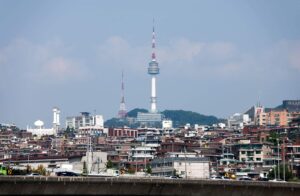List of Contents
South Korea is a country known for its impressive economic growth and development in recent decades, and a significant contributor to this growth has been the presence of powerful conglomerates known as chaebols. Chaebols, which literally means “wealth clan,” are large, family-controlled businesses that have dominated the South Korean economy since the 1960s. In this blog post, we’ll take a closer look at chaebols, their history, and their impact on the South Korean economy.
History
Chaebols emerged in South Korea in the aftermath of the Korean War, when the country was in dire need of economic growth and development. In the 1960s and 1970s, the South Korean government implemented a series of economic policies aimed at promoting the growth of large, export-oriented companies. The government provided various incentives to these companies, including tax breaks, cheap loans, and other forms of support.
As a result, several large conglomerates, such as Samsung, LG, Hyundai, and SK, emerged and grew rapidly. These companies were often controlled by powerful families, who maintained tight control over their businesses and expanded into various industries, including electronics, automobiles, shipbuilding, and construction. Over time, these chaebols became deeply entrenched in the South Korean economy, and their influence only grew stronger.
Characteristics
Chaebols are large, family-controlled conglomerates that have a number of defining characteristics. Some of the key features of chaebols include:
- Family ownership and control:
Chaebols are typically controlled by a family or group of families, with ownership, passed down through the generations. - Diversified businesses:
Chaebols often have interests in a wide range of industries, including electronics, construction, shipbuilding, and telecommunications. - Vertical integration:
Chaebols often control every aspect of their supply chain, from raw materials to finished products, which allows them to reduce costs and increase efficiency. - Cross-shareholding:
Chaebols often hold shares in each other’s companies, creating a web of interlocking ownership and control. - Government support:
Chaebols have historically had close ties to the South Korean government, which has provided them with subsidies, tax breaks, and other forms of support.
Impact on South Korea’s Economy
The chaebols have had a significant impact on the South Korean economy. They are responsible for a large share of the country’s exports and have helped to fuel the rapid growth of the economy. Chaebols have also played a major role in creating jobs, developing infrastructure, and driving technological innovation in South Korea.
However, chaebols have also been criticized for their negative impact on the economy. They often engage in monopolistic practices, such as price-fixing and market manipulation, which can stifle competition and harm consumers. Additionally, the close ties between chaebols and the government have led to allegations of corruption and political influence, which has eroded public trust in both the government and the business sector.
Famous Chaebols
1.Samsung Group
Samsung Group is perhaps the most well-known South Korean chaebol, and one of the largest companies in the world. Founded in 1938 as a trading company, Samsung has since expanded into various industries, including electronics, construction, and shipbuilding. The company is best known for its smartphones, which have become a ubiquitous presence around the globe.
2. Hyundai Motor Group
Hyundai Motor Group is another major South Korean chaebol that has had a significant impact on the country’s economy. The company was founded in 1967 and has since become one of the world’s largest automakers. Hyundai also has interests in construction, steel, and other industries.
3. LG Corporation
LG Corporation is another major South Korean chaebol with a diverse portfolio of businesses, including electronics, chemicals, and telecommunications. The company was founded in 1947 as a chemical company but has since expanded into various other industries. LG is best known for its smartphones, TVs, and home appliances.
4. SK Group
SK Group is a South Korean chaebol that is primarily involved in the energy and telecommunications industries. The company was founded in 1953 as a textile company but has since expanded into various other industries. SK is best known for its SK Telecom subsidiary, which is one of the largest telecommunications providers in South Korea.
Reform of Chaebols
In recent years, there has been a growing push to reform chaebols and address the problems they pose to the South Korean economy. In 2019, the South Korean government passed a series of measures aimed at curbing the power of chaebols and promoting greater transparency and accountability in their operations. These measures included limits on cross-shareholdings, stronger disclosure requirements, and more stringent regulations on mergers and acquisitions.
While these reforms are a step in the right direction, many experts believe that more needs to be done to address the structural problems that underpin the chaebol system. Some have called for greater efforts to promote competition and entrepreneurship in South Korea, while others have suggested that chaebols need to be broken up or restructured to prevent the concentration of economic power in the hands of a few large conglomerates.
Final Thoughts
Chaebols have been a driving force behind the South Korean economy for decades, but their dominance has come at a cost. While chaebols have helped to create jobs, develop infrastructure, and drive technological innovation, they have also engaged in monopolistic practices and eroded public trust in the government and business sector. Reforms aimed at curbing the power of chaebols and promoting greater transparency and accountability are a step in the right direction, but more needs to be done to ensure that the South Korean economy is sustainable, equitable, and competitive in the long run.






